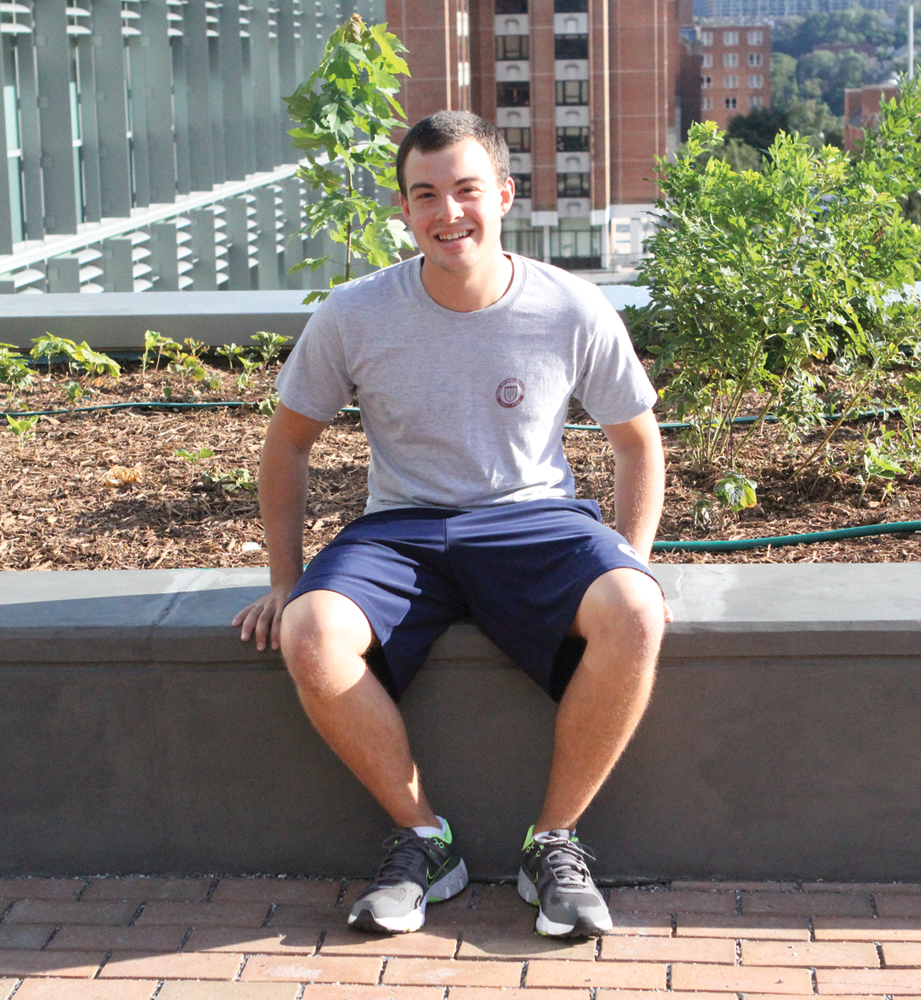
A CHANGE OF PACE | E.J. Thomas (COL ’14) transferred to Georgetown in his junior year after deciding that American University wasn’t for him.
At New Student Orientation, hundreds of new students flood campus. But some of these undergrads had been through the process before: They’re transfer students, who arrive at the front gates looking for a do-over.
In 2011, Georgetown accepted just over 200 transfer students. While many of these students came from across the country, others moved just across the District to get a fresh start. They came from schools like American University and The George Washington University, as well as others that call the D.C. metro area home.
For some students, like E.J. Thomas (COL ’14), transferring offers a second opportunity to apply to Georgetown. Thomas originally applied to Georgetown his senior year of high school but was rejected. He wound up attending American for two years but realized after a semester that it wasn’t the place for him.
“It got to a point where it really wasn’t challenging anymore at American,” he said.
Thomas waited until the end of his sophomore year to transfer, however, hoping that he would earn strong enough grades to finally be accepted to Georgetown, his dream school.
Since arriving on campus a few weeks ago, Thomas has noticed many differences between the two colleges.
“I knew I was coming into a way more challenging school,” he said. “Classes are a lot more difficult here.”
But he added that the differences between the schools extend beyond the rigor of the coursework.
“[At American], 50 percent of the class won’t get actively involved. But I feel like in most Georgetown classes … most people want to engage in the conversation; they want to speak; they want to be engaged in whatever it is they’re learning,” he said.
Thomas believes that Georgetown and American students are different outside the classroom as well.
“In general, there’s not a lot of student activism [at American]. Some people get really involved, but a large majority of the student body is not involved because you have a lot of Greek life,” he said.
Thomas isn’t alone in having felt uncomfortable at his original school. Alexander O’Neill (COL ’14) transferred from the University of Maryland at College Park this semester.
“It simply wasn’t the best fit,” he wrote in an email. “I always wanted a small, liberal-artsy college, a college experience defined by smaller class sizes, peers who could work hard yet still have fun and a place where I could generally explore.”
O’Neill, who grew up in Silver Spring, Md., also felt like the school was too close to home.
“Many of my friends from high school went there,” he said.
Phillip Bradshaw (COL ’14) was happy at George Washington — his sister’s alma mater — until he realized he wanted to study linguistics. The problem was that the school lacks a linguistics program.
“Toward the end of first semester … I realized that I didn’t want to continue an international studies major at GW,” he said. “So I looked around and I saw that Georgetown had linguistics and I figured that was an easy transition.”
Unlike Thomas, Bradshaw does not necessarily feel that his old school was necessarily the wrong place for him, it just didn’t offer the program he was looking for.
“I think a lot of times, transferring is seen as a correction, like you went to George Washington and then you corrected and came to Georgetown,” he said. “I don’t feel that way at all. I went to GW, I really enjoyed GW and then I realized that … GW wasn’t going to be [the] place I continued studying.”
So Bradshaw made the journey down M Street to Georgetown. Within his first few weeks on campus, he was hired by Students of Georgetown, Inc., where he now spends much of his time.
Being a part of the student business helped Bradshaw make new friends immediately and made him feel comfortable on the Hilltop.
“[The transition] could be difficult for [transfer] students who don’t have that instant community and connection, because The Corp is that — for Corpies, at least,” he said.
Like Thomas, Bradshaw has sensed a significant difference between his two schools.
“[The culture] is drastically different. Georgetown is very insular, compared to GW. GW is a lot larger, a lot more urban, a lot gayer. Georgetown, on the other hand, is more secluded and exclusive but still great,” he said.
He believes that part of this difference can be explained by transportation options: With a Metro stop on campus, it’s easy for GW students to experience all the District has to offer. But as a Georgetown student, he’s found it more difficult to venture into the rest of the city.
“It’s really hard for [Georgetown] students, especially considering the natural tendency to stay in Georgetown. The conditions just don’t exist for students to go out as often,” he said.
Because of his links to both schools, Bradshaw frequently makes the trek between campuses on his bicycle. However, he realizes that his case is atypical.
“I didn’t meet a Georgetown student until I transferred, and I don’t think a lot of Georgetown students really know GW students, either,” he said. “They’re very close, but socially and academically, they’re very distinct schools.”
Thomas, too, keeps links with his old university.
“That’s where all my friends are,” he said. “I still read American University’s newspaper. I like to see what kids are complaining about and compare it to here.”
But now that Thomas is here, he can’t imagine leaving.
“Georgetown has always been my dream school,” he said. “I would say it’s a pretty well-known fact that most students that are at American … applied to Georgetown. It’s the best school in D.C.”







